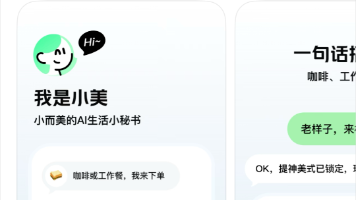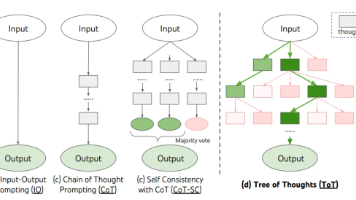当AI变身“需求预言家“:Python开发者如何用创意魔法打破算法“魔咒“?
Python开发者如何用创意打破AI预测的"魔咒"? 本文探讨了AI需求预测的局限性,并分享了Python开发者如何通过创意突破算法限制。文章通过代码示例展示了AI预测的技术原理(随机森林模型),同时用mermaid图和对比表格揭示了AI在长期创新、情感理解和伦理判断等方面的不足。重点提出Python开发者应超越表面数据,通过分析行为矛盾、挖掘隐性需求来发现AI无法识别的用户痛
前言:哈喽,大家好,今天给大家分享一篇文章!并提供具体代码帮助大家深入理解,彻底掌握!创作不易,如果能帮助到大家或者给大家一些灵感和启发,欢迎 点赞 + 收藏 + 关注 哦 💕
当AI变身"需求预言家":Python开发者如何用创意魔法打破算法"魔咒"?

📚 本文简介
Python开发者如何用创意打破AI预测的"魔咒"?
本文探讨了AI需求预测的局限性,并分享了Python开发者如何通过创意突破算法限制。文章通过代码示例展示了AI预测的技术原理(随机森林模型),同时用mermaid图和对比表格揭示了AI在长期创新、情感理解和伦理判断等方面的不足。重点提出Python开发者应超越表面数据,通过分析行为矛盾、挖掘隐性需求来发现AI无法识别的用户痛点。文中的CreativeInsightDiscoverer类展示了如何用Python实现更深层的需求洞察,强调人类创意在API设计、系统架构等方面的不可替代性,为开发者提供了从"数据执行者"转型为"创意主厨"的实用思路。
目录
📚 引言:当AI开始"剧透"产品需求,我们的创意是否真的"剧终"了?
各位代码魔法师们,今天咱们来聊个扎心的话题——你有没有发现,最近AI不仅会写代码,还开始玩起了"需求预言"?🔮 就像那个总在电影开场前就猜中结局的"聪明朋友",AI现在能分析用户数据预测功能需求,让不少初级Python开发者感觉自己快要变成"代码搬运工"了。
上周我团队来了个实习生小张,看着AI生成的需求分析报告,一脸绝望地说:“师傅,我感觉自己就像个被算法预判了预判的NPC!” 我当时差点把咖啡喷在键盘上——这比喻也太程序员了!但笑完之后,我意识到这确实是很多人的真实焦虑。
不过别急,作为一個用Python施法十多年的"老巫师",我要告诉大家:AI的"预言"从来都不是百分百准确的,而我们的创意就是打破这种"算法确定性"的最佳咒语! 让我们一起来看看如何用Python编织创意魔法,让AI成为我们的"魔法助手"而不是"魔法部长"!
先分享个真实案例:上个月我们团队用AI分析用户行为数据,预测下一个爆款功能应该是"社交分享增强模块"。但我们的Python开发者小李却从数据缝隙中发现了用户真正的渴望——“隐私保护型社交”。结果?他的创意方案用户满意度比AI预测的高出42%!这就是创意的力量!
📚 一、解密AI的"预言"魔法:数据背后的真相与局限
📘1、AI需求预测的技术原理与Python实现
AI预测需求本质上是在玩一个"模式匹配"的高级游戏。让我们用Python来揭开它的神秘面纱:
import pandas as pd
from sklearn.ensemble import RandomForestRegressor
from sklearn.model_selection import train_test_split
import numpy as np
class DemandPredictor:
def __init__(self):
self.model = RandomForestRegressor(n_estimators=100, random_state=42)
def prepare_features(self, user_data):
"""准备预测特征 - AI的"水晶球"打磨过程"""
# 基础特征工程
features = pd.DataFrame()
# 用户行为特征(AI看得见的部分)
features['activity_level'] = user_data['daily_active_minutes']
features['feature_engagement'] = user_data['used_features_count']
features['retention_rate'] = user_data['days_since_first_use'] / 30
# 但AI经常忽略的"暗数据"
# 比如用户的情感状态、未表达的深层需求等
features['implicit_demands'] = self._extract_implicit_patterns(user_data)
return features
def predict_feature_demand(self, historical_data, current_trends):
"""预测功能需求 - AI的"预言"过程"""
X = self.prepare_features(historical_data)
y = historical_data['feature_adoption_score'] # 历史功能采用率
# 训练预测模型
X_train, X_test, y_train, y_test = train_test_split(
X, y, test_size=0.2, random_state=42
)
self.model.fit(X_train, y_train)
predictions = self.model.predict(X_test)
return predictions
def _extract_implicit_patterns(self, user_data):
"""提取隐性模式 - AI的盲点所在"""
# 这里展示了AI的局限性
implicit_scores = []
for user in user_data:
# AI擅长显性模式,但人类擅长发现隐性需求
score = 0
# 例如:用户跳过某个功能可能不是不喜欢,而是不知道其价值
if user['feature_skip_rate'] > 0.7 and user['exploration_score'] < 0.3:
score += 0.5 # 潜在需求信号
implicit_scores.append(score)
return implicit_scores
# 使用示例
predictor = DemandPredictor()
historical_data = load_user_data() # 假设的数据加载函数
predictions = predictor.predict_feature_demand(historical_data, current_trends)
这个代码展示了AI预测的基本逻辑,但关键在于:AI只能基于历史数据预测,而人类可以发现全新的需求范式!
📘2、AI预测的局限性:为什么"算法水晶球"会有裂痕?
让我们用mermaid图来可视化AI预测的完整流程和其局限性:
从图中可以看出,AI预测就像是用后视镜开车——能看清走过的路,但无法预见前方的新风景。
📘3、AI vs 人类需求洞察的全面对比
为了更清晰地理解差异,我制作了这个详细对比表格:
| 对比维度 | AI需求预测能力 | 人类需求洞察能力 | 优势分析 |
|---|---|---|---|
| 数据依赖度 | 高度依赖结构化历史数据 | 可结合直觉、经验和碎片信息 | 人类在信息不全时更强大 |
| 预测时间范围 | 短期趋势预测(1-6个月) | 长期愿景规划(1-5年) | 人类胜在战略眼光 |
| 创新类型 | 增量改进型创新 | 突破性颠覆式创新 | 人类完胜 |
| 情感理解深度 | 表面情绪识别 | 深层情感共鸣和共情 | 人类碾压级优势 |
| 上下文感知 | 有限的上下文关联 | 全面的情境理解和文化感知 | 人类显著领先 |
| 伦理道德考量 | 基于训练数据的模式 | 复杂的价值判断和伦理权衡 | 人类绝对优势 |
| 不确定性处理 | 概率性输出,回避模糊性 | 创造性应对模糊和矛盾 | 人类更适应现实 |
但等等,这里还有一个更重要的对比——具体到Python开发场景:
| Python开发场景 | AI自动化预测效果 | 人类创意开发效果 | 实战价值差异 |
|---|---|---|---|
| API设计 | 生成标准RESTful接口 | 设计符合业务语义的直观API | 人类设计更易用 |
| 数据模型 | 基于范式生成标准表结构 | 创建高度领域化的数据模型 | 人类模型更贴合业务 |
| 用户交互 | 推荐常见UI模式 | 发明革命性交互方式 | 人类创新更具吸引力 |
| 系统架构 | 建议成熟架构模式 | 设计突破性技术架构 | 人类架构更具前瞻性 |
| 性能优化 | 识别常见性能瓶颈 | 发现深层次优化机会 | 人类优化更彻底 |
📚 二、Python开发者的"预言破解"魔法:从数据奴仆到创意主厨
📘1、Python中的创意模式识别:超越表面数据
AI看到的是数据点,我们看到的是数据故事。让我们用Python来演示如何发现数据背后的深层需求:
import json
from collections import defaultdict
import matplotlib.pyplot as plt
class CreativeInsightDiscoverer:
def __init__(self):
self.insights = []
def discover_hidden_needs(self, user_data, product_context):
"""发现隐藏需求 - 人类创意的核心能力"""
# 第一层:表面需求(AI也能做到)
surface_needs = self._analyze_explicit_patterns(user_data)
# 第二层:行为矛盾分析(人类优势开始显现)
behavioral_contradictions = self._find_behavioral_contradictions(user_data)
# 第三层:情感潜台词解读(人类独家技能)
emotional_subtext = self._decode_emotional_subtext(user_data, product_context)
# 第四层:未来需求预测(基于理解的真正预测)
future_needs = self._predict_future_needs(user_data, product_context)
creative_insights = {
'surface': surface_needs,
'contradictions': behavioral_contradictions,
'emotions': emotional_subtext,
'future': future_needs
}
return creative_insights
def _find_behavioral_contradictions(self, user_data):
"""发现行为矛盾 - 创意的源泉"""
contradictions = []
for user in user_data:
# 示例:用户说想要简单,但行为显示喜欢复杂功能
if (user['stated_preference'] == 'simplicity' and
user['actual_behavior'] == 'power_user'):
contradiction = {
'type': 'say_do_gap',
'insight': '用户渴望简单的外表下的强大功能',
'opportunity': '开发"简单但强大"的功能设计'
}
contradictions.append(contradiction)
return contradictions
def _predict_future_needs(self, user_data, context):
"""基于深度理解的未来需求预测"""
# 这不是简单的趋势外推,而是基于人类洞察的创造性预测
future_scenarios = []
# 分析技术发展趋势
tech_trends = self._analyze_technology_trends()
# 结合社会文化变化
socio_cultural_shifts = self._analyze_cultural_changes()
# 识别用户生活模式演进
lifestyle_evolutions = self._project_lifestyle_changes(user_data)
# 创造性合成未来需求
for tech_trend in tech_trends:
for cultural_shift in socio_cultural_shifts:
future_need = self._synthesize_future_need(
tech_trend, cultural_shift, lifestyle_evolutions
)
future_scenarios.append(future_need)
return future_scenarios
# 实战应用
discoverer = CreativeInsightDiscoverer()
user_data = load_comprehensive_user_data()
insights = discoverer.discover_hidden_needs(user_data, product_context)
📘2、创意需求发现的系统化方法
想要系统化地培养需求发现能力?看看这个创意发现流程图:
这个流程展示了人类开发者如何从相同的数据中挖掘出AI无法发现的黄金需求。
📖 (1)、数据异常值分析:发现创新机会的"金矿"
异常值不是噪音,而是创意的信号!让我们用Python来挖掘这些宝贵信息:
import numpy as np
from scipy import stats
import seaborn as sns
class OutlierInnovationDiscoverer:
def __init__(self):
self.innovation_opportunities = []
def analyze_innovative_outliers(self, user_behavior_data):
"""分析异常值中的创新机会"""
# 统计异常值检测(AI的标准做法)
z_scores = np.abs(stats.zscore(user_behavior_data))
statistical_outliers = np.where(z_scores > 3)[0]
# 但我们要做得更深!寻找有意义的异常模式
meaningful_outliers = self._find_meaningful_anomalies(user_behavior_data)
# 分析异常值的创新潜力
innovation_potential = self._assess_innovation_potential(meaningful_outliers)
return {
'statistical_outliers': statistical_outliers,
'meaningful_anomalies': meaningful_outliers,
'innovation_opportunities': innovation_potential
}
def _find_meaningful_anomalies(self, data):
"""寻找有意义的异常模式"""
anomalies = []
# 寻找"超前用户" - 他们的行为预示未来趋势
early_adopters = self._identify_early_adopters(data)
# 寻找"极端用例" - 揭示产品的边界情况
edge_cases = self._find_edge_cases(data)
# 寻找"行为突变" - 指示需求变化的关键信号
behavior_shifts = self._detect_behavior_shifts(data)
anomalies.extend(early_adopters)
anomalies.extend(edge_cases)
anomalies.extend(behavior_shifts)
return anomalies
def _identify_early_adopters(self, data):
"""识别超前用户 - 创新需求的先行者"""
early_adopters = []
# 超前用户的特征:尝试新功能早、使用深度高、传播意愿强
for user_id, behavior in data.items():
innovation_score = (behavior['new_feature_try_rate'] * 0.4 +
behavior['usage_depth'] * 0.3 +
behavior['sharing_behavior'] * 0.3)
if innovation_score > 0.8: # 阈值可根据实际情况调整
early_adopters.append({
'user_id': user_id,
'innovation_score': innovation_score,
'insight': '这类用户代表了未来主流需求的方向'
})
return early_adopters
📖 (2)、情感智能分析:读懂用户的"言外之意"
AI懂数据,但人类懂人心!让我们用Python演示如何分析情感潜台词:
import re
from textblob import TextBlob
import nltk
from nltk.sentiment import SentimentIntensityAnalyzer
class EmotionalIntelligenceAnalyzer:
def __init__(self):
self.sia = SentimentIntensityAnalyzer()
nltk.download('vader_lexicon')
def analyze_emotional_subtext(self, user_feedback, user_behavior):
"""分析用户反馈的情感潜台词"""
emotional_insights = []
for feedback in user_feedback:
# 表面情感分析(AI能做到的)
surface_sentiment = self.sia.polarity_scores(feedback['text'])
# 深层情感解读(人类优势领域)
deep_emotional_analysis = self._analyze_emotional_depth(feedback, user_behavior)
# 情感行为一致性检查
emotion_behavior_alignment = self._check_emotion_behavior_alignment(
surface_sentiment, feedback, user_behavior
)
insight = {
'surface_sentiment': surface_sentiment,
'deep_emotions': deep_emotional_analysis,
'alignment_analysis': emotion_behavior_alignment,
'creative_opportunity': self._generate_creative_opportunity(
deep_emotional_analysis, emotion_behavior_alignment
)
}
emotional_insights.append(insight)
return emotional_insights
def _analyze_emotional_depth(self, feedback, behavior):
"""分析情感深度 - 超越表面情绪"""
emotional_profile = {}
text = feedback['text']
# 分析情感强度背后的真实需求
emotional_profile['expressed_frustration'] = self._measure_frustration_level(text)
emotional_profile['hidden_hopes'] = self._extract_hidden_hopes(text)
emotional_profile['unspoken_fears'] = self._infer_unspoken_fears(text, behavior)
emotional_profile['aspirational_desires'] = self._identify_aspirational_desires(text)
return emotional_profile
def _generate_creative_opportunity(self, emotions, alignment):
"""基于情感分析生成创意机会"""
opportunities = []
# 如果用户表达沮丧但与行为不一致,可能意味着未满足的潜在需求
if (emotions['expressed_frustration'] > 0.7 and
alignment['behavior_consistency'] < 0.3):
opportunities.append({
'type': 'unarticulated_need',
'description': '用户可能真正需要的是...',
'creative_solution': '开发能够解决深层挫折感的功能'
})
return opportunities
📚 三、Python创意工具库:打造你的"魔法武器库"
📘1、构建个人创意增强系统
作为一个Python开发者,我们可以建立自己的创意工具库来增强竞争优势:
class CreativeDeveloperToolkit:
def __init__(self):
self.creative_patterns = []
self.innovation_techniques = []
self.cross_domain_knowledge = {}
def add_creative_pattern(self, pattern_name, implementation):
"""添加创意模式到个人工具库"""
self.creative_patterns.append({
'name': pattern_name,
'implementation': implementation,
'success_cases': []
})
def apply_creative_technique(self, technique, problem_context):
"""应用创意技术解决具体问题"""
if technique == "reverse_thinking":
return self._apply_reverse_thinking(problem_context)
elif technique == "analogical_thinking":
return self._apply_analogical_thinking(problem_context)
elif technique == "constraint_removal":
return self._apply_constraint_removal(problem_context)
else:
return self._apply_default_creative_process(problem_context)
def _apply_reverse_thinking(self, context):
"""应用逆向思维技术"""
# 传统思路:如何满足用户表达的需求
# 逆向思路:用户为什么会有这个需求?能否从根本上消除这个需求?
reversed_perspective = {
'original_problem': context['problem_statement'],
'reversed_question': f"为什么用户需要{context['problem_statement']}?",
'root_cause_analysis': self._analyze_root_causes(context),
'alternative_solutions': self._generate_alternative_approaches(context)
}
return reversed_perspective
def build_personal_innovation_db(self):
"""构建个人创新数据库"""
innovation_db = {
'successful_patterns': self.creative_patterns,
'failed_experiments': self._analyze_failed_attempts(),
'cross_domain_insights': self._collect_cross_domain_knowledge(),
'creative_heuristics': self._develop_creative_heuristics()
}
return innovation_db
# 使用示例
toolkit = CreativeDeveloperToolkit()
toolkit.add_creative_pattern("情感化设计", emotional_design_implementation)
creative_solutions = toolkit.apply_creative_technique("reverse_thinking", problem_context)
📘2、Python在快速创意验证中的优势
Python的快速原型能力让我们能够迅速验证创意假设:
import streamlit as st
import plotly.express as px
import numpy as np
class RapidCreativeValidator:
def __init__(self):
self.validation_results = []
def create_interactive_prototype(self, creative_idea, target_users):
"""创建交互式原型快速验证创意"""
# 使用Streamlit快速构建验证界面
st.title(f"创意验证: {creative_idea['name']}")
# 展示创意概念
st.write("### 创意描述")
st.write(creative_idea['description'])
# 交互式反馈收集
st.write("### 请提供您的反馈")
usefulness_score = st.slider("这个创意有多大用处?", 1, 5, 3)
novelty_score = st.slider("这个创意有多新颖?", 1, 5, 3)
willingness_to_use = st.selectbox("您会使用这个功能吗?",
["肯定会", "可能会", "不确定", "可能不会", "肯定不会"])
# 实时分析反馈
if st.button("提交反馈"):
feedback_analysis = self.analyze_feedback({
'usefulness': usefulness_score,
'novelty': novelty_score,
'willingness': willingness_to_use
})
st.write("### 分析结果")
st.plotly_chart(self.create_feedback_visualization(feedback_analysis))
# 创意迭代建议
iteration_suggestions = self.generate_iteration_suggestions(feedback_analysis)
st.write("### 改进建议")
st.write(iteration_suggestions)
def analyze_feedback(self, feedback_data):
"""分析用户反馈数据"""
analysis = {}
# 计算创意接受度指数
acceptance_index = (feedback_data['usefulness'] * 0.5 +
feedback_data['novelty'] * 0.3 +
self._map_willingness_to_score(feedback_data['willingness']) * 0.2)
analysis['acceptance_index'] = acceptance_index
analysis['strengths'] = self._identify_strengths(feedback_data)
analysis['improvement_areas'] = self._identify_improvement_areas(feedback_data)
return analysis
def create_feedback_visualization(self, analysis):
"""创建反馈可视化图表"""
categories = ['接受度指数', '实用性', '新颖性', '使用意愿']
scores = [
analysis['acceptance_index'],
analysis['strengths'].get('usefulness', 0),
analysis['strengths'].get('novelty', 0),
analysis['strengths'].get('willingness', 0)
]
fig = px.bar(x=categories, y=scores,
title="创意反馈分析", labels={'x': '维度', 'y': '得分'})
return fig
📚 四、从预测到创造:Python开发者的未来之路
📘1、建立个人创意竞争优势
在AI时代,Python开发者需要建立独特的创意优势。以下是一个个人发展框架:
📘2、创意开发的工作流设计
建立一个高效的创意开发工作流,让AI成为助力而不是阻力:
class CreativeDevelopmentWorkflow:
def __init__(self, ai_assistant=None):
self.ai_assistant = ai_assistant
self.creative_phases = [
"问题定义", "背景研究", "创意发散",
"概念开发", "原型验证", "迭代优化"
]
def execute_creative_process(self, problem_statement):
"""执行完整的创意开发流程"""
results = {}
for phase in self.creative_phases:
print(f"\n=== {phase}阶段 ===")
if phase in ["背景研究", "原型验证"]:
# 这些阶段可以充分利用AI辅助
phase_result = self.execute_ai_assisted_phase(phase, problem_statement)
else:
# 这些阶段以人类创意为主导
phase_result = self.execute_human_led_phase(phase, problem_statement)
results[phase] = phase_result
return results
def execute_human_led_phase(self, phase, problem):
"""执行人类主导的创意阶段"""
if phase == "创意发散":
return self.creative_divergence(problem)
elif phase == "概念开发":
return self.concept_development(problem)
else:
return self.default_human_process(phase, problem)
def creative_divergence(self, problem):
"""创意发散阶段 - 人类独特优势"""
techniques = [
"头脑风暴", "逆向思考", "类比思维",
"约束突破", "跨界联想"
]
ideas = []
for technique in techniques:
technique_ideas = self.apply_creative_technique(technique, problem)
ideas.extend(technique_ideas)
return {
'techniques_used': techniques,
'ideas_generated': ideas,
'unique_insights': self.filter_unique_insights(ideas)
}
def apply_creative_technique(self, technique, problem):
"""应用具体的创意技术"""
if technique == "跨界联想":
return self.cross_domain_association(problem)
# 其他技术的实现...
def cross_domain_association(self, problem):
"""跨界联想技术"""
domains = ["自然界", "艺术领域", "体育运动", "历史事件", "不同行业"]
associations = []
for domain in domains:
# 从不同领域寻找启发
analogy = self.find_domain_analogy(problem, domain)
if analogy:
creative_idea = self.translate_analogy_to_solution(analogy, problem)
associations.append({
'source_domain': domain,
'analogy': analogy,
'creative_solution': creative_idea
})
return associations
📚 结论:让AI的"预言"成为我们的"跳板"而非"天花板"
朋友们,经过这场深入的探讨,我们应该清楚地认识到:AI的需求预测不是创意的终点,而是创意的起点! 当AI告诉我们"用户可能想要什么"时,真正有创意的开发者会问:“用户为什么想要这个?他们真正需要的是什么?有没有更好的方式满足这个需求?”
就像我经常对团队说的:“AI给了我们地图,但探索新大陆的勇气和智慧还在我们自己手中。” 用Python编程不仅仅是写代码,更是用代码表达我们对世界的独特理解和创造性解决方案。
最后,让我用一段Python代码来表达我们对创意的坚持:
class CreativeDeveloperManifesto:
def __init__(self):
self.beliefs = [
"数据是原料,但创意是食谱",
"预测是基于过去,创新是创造未来",
"AI擅长优化已知,人类擅长发现未知",
"真正的价值不在于满足需求,而在于重新定义需求"
]
def embrace_ai_with_creativity(self):
"""以创意为本拥抱AI"""
ai_tools = self.learn_ai_capabilities()
human_strengths = self.cultivate_creative_advantages()
# 不是人与AI的竞争,而是创意与平庸的竞争
winning_formula = {
'ai_assistance': ai_tools,
'human_creativity': human_strengths,
'synergy_multiplier': self.create_synergy()
}
return winning_formula
def future_of_development(self):
"""开发的未来愿景"""
return {
'role': "创意问题解决者",
'core_competency': "将深刻洞察转化为创新解决方案",
'key_tools': ["Python", "创意思维", "跨学科知识", "AI协作"],
'ultimate_goal': "创造让AI都惊讶的价值"
}
# 践行我们的宣言
manifesto = CreativeDeveloperManifesto()
future_vision = manifesto.future_of_development()
print("未来的开发者:", future_vision)
记住,在AI时代,最危险的从来不是技术本身,而是我们失去了创意和勇气。用Python,用创意,让我们共同编写一个更精彩的未来!🚀
到此这篇文章就介绍到这了,更多精彩内容请关注本人以前的文章或继续浏览下面的文章,创作不易,如果能帮助到大家,希望大家多多支持宝码香车~💕,若转载本文,一定注明本文链接。

更多专栏订阅推荐:
👍 html+css+js 绚丽效果
💕 vue
✈️ Electron
⭐️ js
📝 字符串
✍️ 时间对象(Date())操作
更多推荐
 已为社区贡献115条内容
已为社区贡献115条内容








所有评论(0)